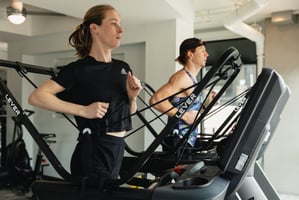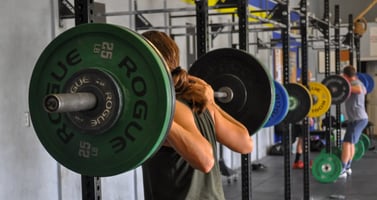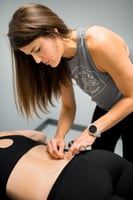At Core Values Physical Therapy in Orlando and Winter Garden, we specialize in helping athletes,...
Understanding Sprains and Strains in Youth Athletes.
Introduction
As parents of young athletes, ensuring your kids’ safety and well-being is a top priority. Youth sports offer numerous benefits, from promoting physical fitness and a strong sense of self to fostering teamwork and discipline. However, with athletic pursuits come the risk of injuries, particularly sprains and strains. Understanding the difference between these common injuries and how to manage them is crucial for keeping your child active and healthy.
What’s the difference?
Sprains and strains are two distinct injuries that often occur in youth sports, but they are frequently confused.
- Sprain: A sprain occurs when ligaments, the tough bands of tissue connecting bones in a joint, are stretched or torn. Sprains are common in ankles, knees, and wrists and often result from a fall, twist, or blow to the body that forces a joint out of its normal position. Ligaments are non-contractile tissue and contribute to the static stability in a joint.
- Strain: A strain involves an injury to a muscle or tendon, the fibrous cords of tissue that connect muscles to bones. These are the dynamic tissues that stabilize joints and can contract and relax. Strains can happen suddenly or develop over time due to repetitive motion. They often affect the biceps, pec, quad or hamstrings.
Pathology and Treatment Options
Both sprains and strains can range from mild to severe, with symptoms including pain, swelling, bruising, and limited movement. Initially it was believed that rest, Ice, compression and elevation was the way to manage an acute injury however that has been debunked. The best way to manage an acute injury is to reduce swelling with compression, soft tissue work to manually drain swelling, easy range of motion, and light exercise. You might also need your athlete to reduce weight through the affected limb depending on how severe the injury is. But remember, there is a whole body to stay healthy, there are so many ways you can safely train around an injury and the coaches at TAT and the doctors of Core Values Physical Therapy can help with that.
The Indispensable Role of Physical Therapy
Physical therapy plays a crucial role in managing sprains and strains. A tailored rehabilitation program designed by a physical therapist can significantly improve recovery outcomes by:
- Reducing pain and swelling
- Restoring flexibility and strength
- Improving balance and coordination
- Preventing future injuries
Is Professional Help Essential?
While minor sprains and strains can often be managed at home, professional help is essential for more severe cases. At Core Values Physical Therapy in Winter Garden, our experienced team of physical therapists provides comprehensive assessments and individualized treatment plans. Seeking expert care ensures that your child receives the appropriate treatment and guidance for a safe and effective recovery without losing their fitness or skill sets.
Early Intervention: The Key to Recovery
Early diagnosis and treatment are vital in preventing further complications. Ignoring symptoms or delaying treatment can lead to chronic pain or instability, increasing the risk of re-injury. If your child complains of persistent pain or difficulty moving a joint, consult a physical therapist promptly.
Gaining Strength and Flexibility
Rehabilitation involves exercises aimed at regaining strength and flexibility. Physical therapists guide youth athletes through:
- Strengthening exercises: These help rebuild muscles around the injured area.
- Mobility exercises: Mobility routines enhance controlled range of motion and reduce stiffness.
- Functional training: Tailored activities mimic sports-specific movements to prepare the athlete for return to play.
Pain Management
Effective pain management is essential to recovery. Physical therapy techniques such as manual therapy, taping, cupping, dry-needling and therapeutic exercise can alleviate pain and promote healing, allowing your child to focus on rehabilitation without discomfort.
Preventing Future Episodes
Preventive measures and long-term management are crucial to avoid recurrent injuries. Physical therapists and coaches educate athletes on:
- Proper warm-up and cool-down routines
- Strengthening exercises for vulnerable areas
- Correct techniques and posture during sports activities
Key Takeaways:
Understanding the differences between sprains and strains and the importance of early intervention and physical therapy can make a significant difference in your child’s recovery journey. An acute injury might need to be unloaded for a certain amount of time but need light exercise, gentle range of motion and swelling reduction to promote healing. At Core Values Physical Therapy, our dedicated team is here to support your youth athlete's recovery and performance enhancement.
Contact us today to schedule an appointment and take the first step toward a healthier, stronger future for your young athlete. 407-476-6613 or www.corevaluesptorlando.com/contact-us
FAQ Section
Frequently Asked Questions
- What is the difference between a sprain and a strain?
- A sprain affects ligaments, while a strain involves muscles or tendons.
- How long does it take for a sprain or strain to heal?
- Recovery time varies depending on the severity but generally ranges from a few days to several weeks.
- When should I seek medical attention for a sprain or strain?
- Seek professional help if your child experiences severe pain, can’t bear weight through an affected limb, or there is severe swelling, or difficulty moving the affected area.
- Can my child play sports with a sprain or strain?
- It’s important to allow proper healing before returning to sports and will fully depend on body part and the sport. Consult a physical therapist to determine when it’s safe.
- How can I prevent sprains and strains in my child?
- Ensure your child warms up before activities, uses proper techniques, has sufficient mobility and strengthens muscles through regular exercise.
By understanding these common injuries and how to address them, you can help ensure your child enjoys a safe and active sports experience. At Core Values Physical Therapy, we are committed to providing the highest quality care to support your young athlete's journey.



